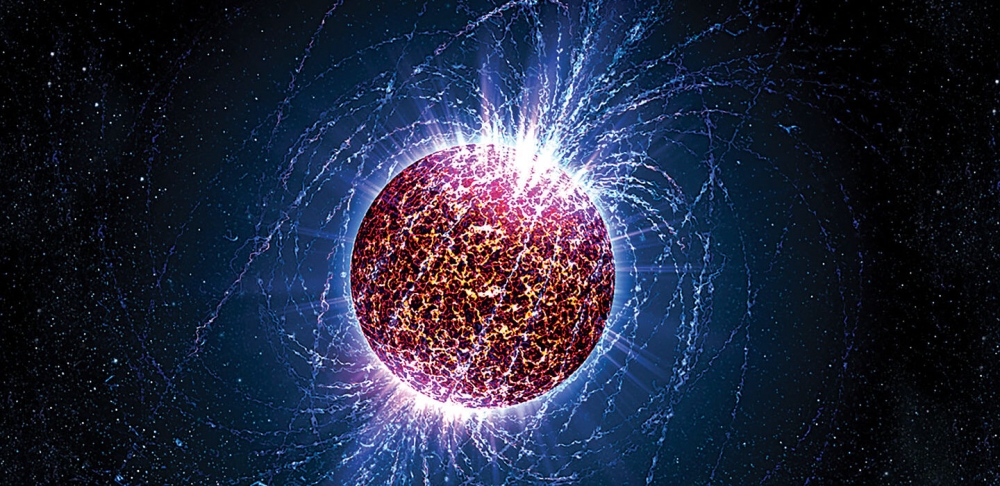Einstein’s theory of general relativity unveiled a dynamic and bizarre cosmos

Neutron stars (one illustrated) squash the mass equivalent of the sun into the size of a city. CASEY REED/PENN STATE
By Elizabeth Quill FEBRUARY 3, 2021
The predictions were right about black holes, gravitational waves and universe expansion
Albert Einstein’s mind reinvented space and time, foretelling a universe so bizarre and grand that it has challenged the limits of human imagination. An idea born in a Swiss patent office that evolved into a mature theory in Berlin set forth a radical new picture of the cosmos, rooted in a new, deeper understanding of gravity.
Out was Newton’s idea, which had reigned for nearly two centuries, of masses that appeared to tug on one another. Instead, Einstein presented space and time as a unified fabric distorted by mass and energy. Objects warp the fabric of spacetime like a weight resting on a trampoline, and the fabric’s curvature guides their movements. With this insight, gravity was explained.
Einstein presented his general theory of relativity at the end of 1915 in a series of lectures in Berlin. But it wasn’t until a solar eclipse in 1919 that everyone took notice. His theory predicted that a massive object — say, the sun — could distort spacetime nearby enough to bend light from its straight-line course. Distant stars would thus appear not exactly where expected. Photographs taken during the eclipse verified that the position shift matched Einstein’s prediction. “Lights all askew in the heavens; men of science more or less agog,” declared a New York Times headline.
See full text